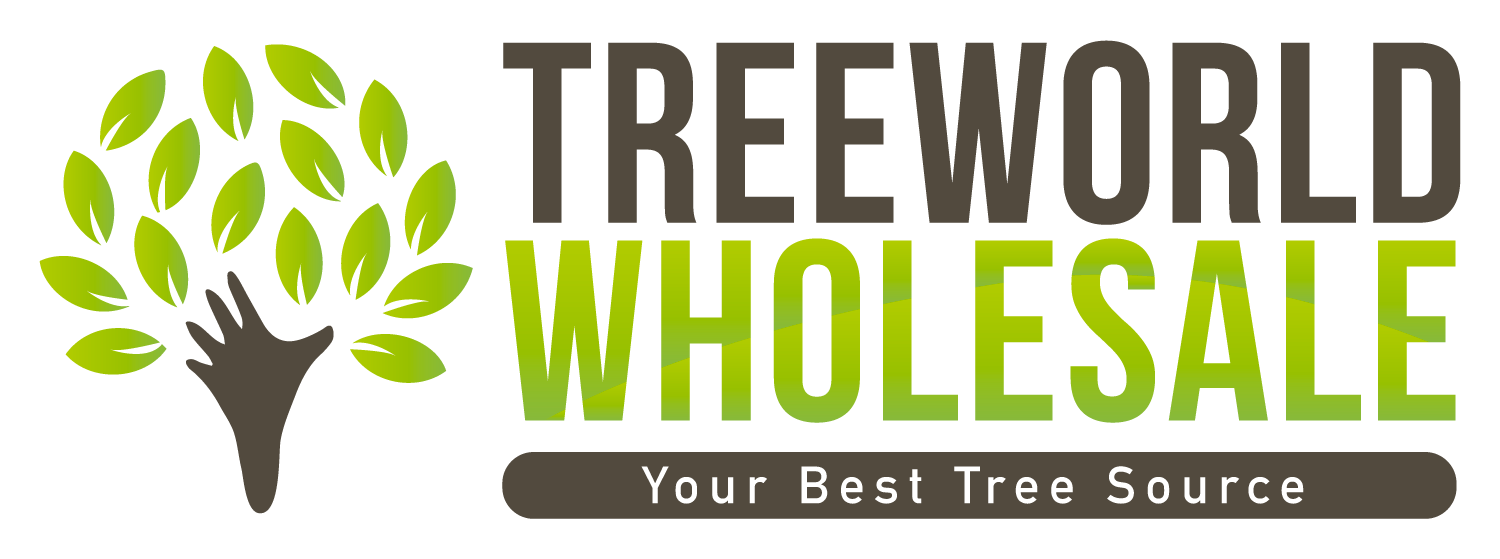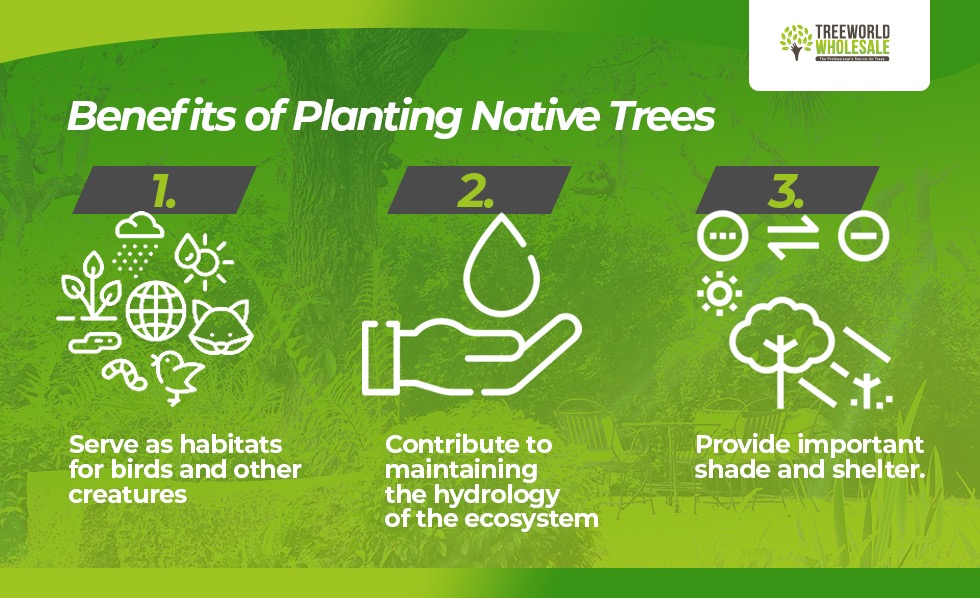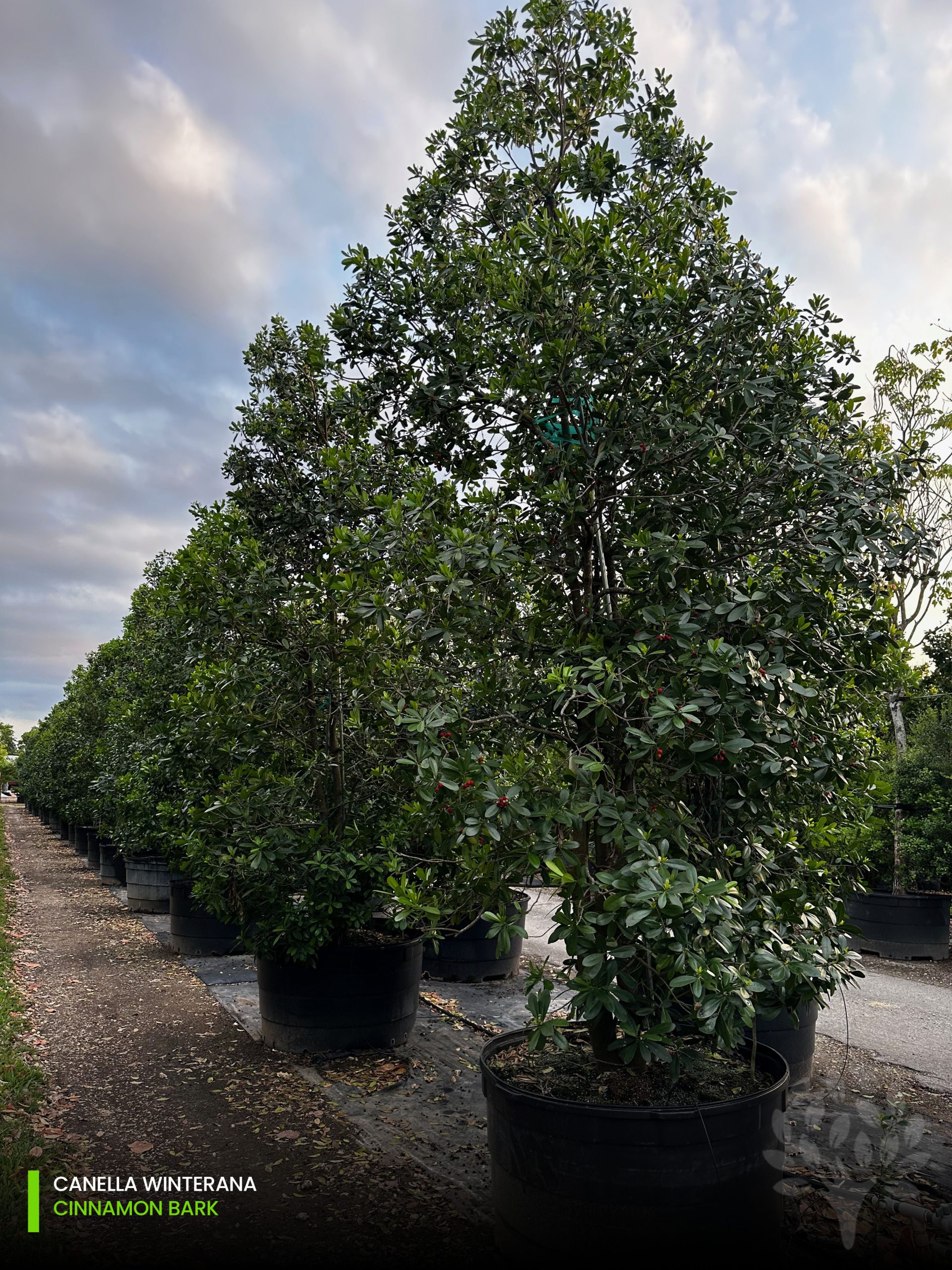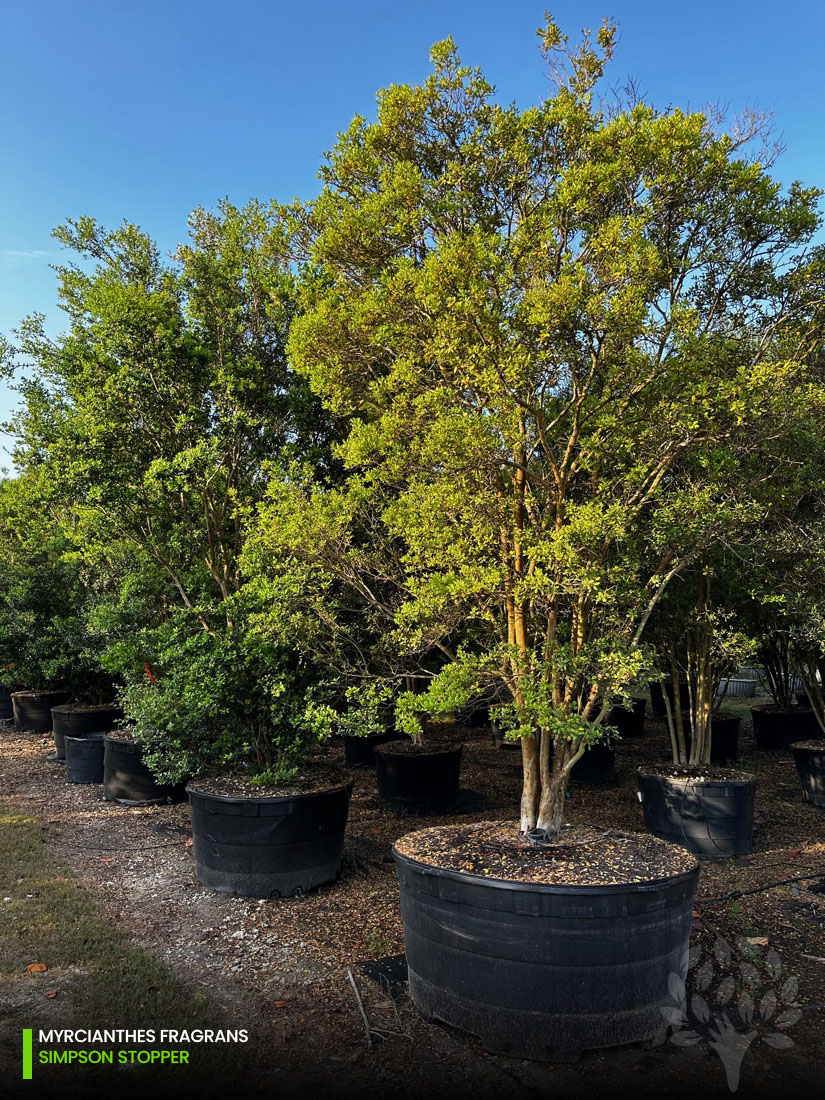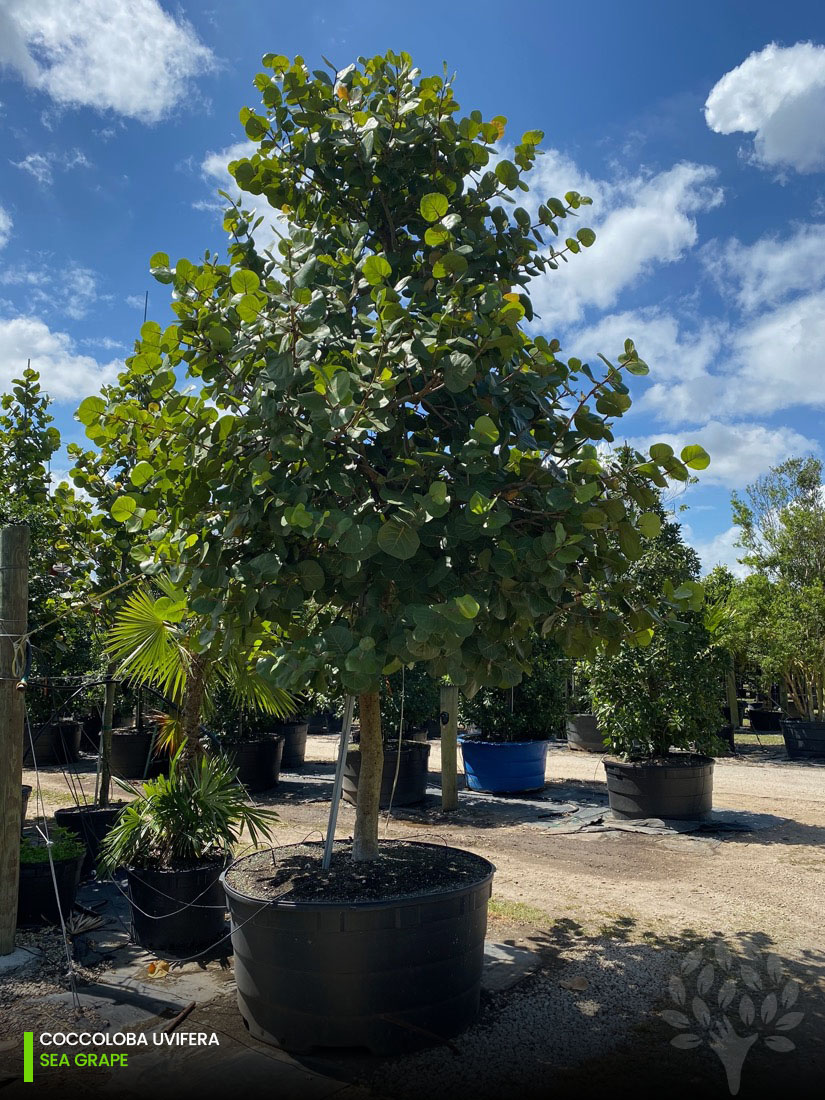Planting native trees in the South Florida landscape is not only important for preserving the local ecosystem. But it also ensures a functional and sustainable landscape design. Reasons why it’s important to plant and preserve the native plants as they’ve evolved over thousands of years to thrive in their specific environment, developing complex relationships with the fauna and flora.
South Florida’s unique ecosystem
In South Florida, planting native trees is particularly important because the region is home to a unique and fragile ecosystem. For instance, the Everglades is a complex wetland system that supports a wide variety of plant and animal species. The red maple (Acer rubrum), slash pine (Pinus ellioti), and bald cypress (Taxodium distichum). Are some of the trees that are essential for the area. These trees serve as habitats for birds and other creatures. And by controlling water flow, they also contribute to maintaining the hydrology of the ecosystem.
Another area of consideration is the hammocks, wooded elevated areas above surrounding wetlands. And important habitat for a variety of species. Some native trees that are important for hammock ecosystems include: live oak (Quercus Virginiana), gumbo limbo (Bursera simaruba), and mahogany (Swietenia mahagoni). These trees also provide shade and shelter for birds and other animals.
Finally, but not least important, when landscaping in South Florida, there is coastal landscaping in an area vulnerable to hurricanes and other extreme weather events. So you might want to consider trees that have deep roots that help anchor them during storms and are also able to withstand salt spray and other coastal conditions. Some examples are the sea grape (Coccoloba uvifera), the green and silver buttonwood (Conocarpus erectus and Conocarpus erectus var. sericeus), and the crabwood tree (Gymnanthes lucida).
The Benefits of Planting Native Trees
Planting native plants also has practical benefits for landscape design. Native plants are adapted to local soil and climate conditions, which means they are often more resilient and require less maintenance than non-native species. They are also more likely to attract local pollinators, such as bees and butterflies, which can help to maintain a healthy ecosystem.
Remember that planting a variety of native trees can help ensure a strong and healthy ecosystem in South Florida. We can contribute to preserving the distinctive and vulnerable ecosystem of our region for future generations by encouraging the use of native trees in our designs and landscapes. And as we will soon reveal, native trees are not only good for the environment,but also very useful and aesthetically pleasing in landscape designs.
Do you want to know more about the importance of native trees? Check them out on our blog!
Next, some of our top native choices according to their categories.
Native Trees and Their Best Landscape Applications
Shade Trees
If you are looking for a good shade tree, the Southern Live Oak (Quercus Viriginiana).That can reach of up to 80 feet high and has a broad canopy that offers plenty of shade, is a great option. And with deep roots and a strong carbon sequestration system that enables them to withstand hard winds and severe circumstances.
Further along, the wild tamarind trees (Lysiloma latisiliquum), which are renowned for their lovely foliage and their capacity to attract pollinators like bees and butterflies, also offer plenty of shade. They can thrive in a variety of soil types and are also quite drought-tolerant.
In addition, the mahogany (Swietenia mahagoni) is another excellent option because it is a large, spreading tree that can reach a height of 60 feet and has a broad spreading canopy. And the beloved Gumbo limbo (Bursera simaruba). Commonly referred to as the “tourist tree,” which can reach heights of 60 feet with a broad canopy. And a distinctive, peeling bark that provides a unique look for any landscaping project. Besides, they are drought-tolerant and can thrive in a variety of soil types.
Accent trees, border plants, and much more
Despite the fact that we could certainly go on and on about this category. We have selected a few native trees that work best as tree borders, privacy hedges, focal points, and distinctive accent trees.
Starting off with the Crabwood tree (Gymnanthes lucida), also known as oysterwood. Is a small native tree that produces beautiful, glossy leaves and yellow-green flowers. A great option in small gardens or as a border plant. Moreover, the fragrant Cinnamon Bark (Canella Winterana), which produces red flowers with yellow anthers and has a beautiful, textured bark.
Following along, the stunningly lovely Guaiacum sanctum, often known as our own lignum vitae, is a fantastic choice for use as an accent tree or as a specimen. It has brilliant, alluring purple-blue blossoms.
And if you’re looking for a native tree to highlight their surroundings! Consider the Myrtle of the River (Calyptranthes Zuzygium), marlberry tree (Ardisia escallonoides) and Jamaican caper (Capparis cyanophollora).
Each of which has lovely foliage, can offer a stunning aesthetic aspect to any landscape design by accentuating their surroundings with their little blooms and attractive berries. And a fantastic choice for use as a border plant or in hedges. Due to its eye-catching foliage and flowers that add a splash of color to any landscape design.
The Stoppers
For this next category, we’ve decided to single out the stoppers, which are also really important to the South Florida landscape. These Myrtaceae-family native trees are prized for their lovely foliage, vibrant fruits, and capacity to draw wildlife to the landscape.
The stoppers are great options all around because of their eye-catching foliage, vibrant fruit, and capacity to draw wildlife. They are suitable for use in a variety of landscape applications. Such as hedges, screens, or specimen trees. And they are tolerant of a broad spectrum of soil and light conditions and generally low-maintenance.
Myrcianthes fragrans, sometimes referred to as Simpson’s stopper, is one of the best-known stoppers. It reaches a height of up to 20 feet and is renowned for its exfoliating trunk and fragrant white flowers that bloom in the summer. These blossoms are followed by scarlet fruits that attract birds. Moving along in the line is the grateful Eugenia rhombea. Also known as red stopper, which is a small to medium-sized tree that produces dark green foliage. Along with an attractive reddish new leaf flush.
Continuing with the category, you’ll find the Eugenia foetida, or Spanish stopper, also a small to medium-sized tree that produces white flowers. And finally, Eugenia axillaris, or white stopper, is a small tree that produces white flowers in the spring, followed by red fruit that is attractive to birds.
Coastal Landscaping
And finally, but not less important, we should address coastal landscaping in South Florida. Which presents unique challenges due to the exposure to salt, hard wind, and salt water. Demanding a selection of trees that are adapted to these conditions. Ensuring their long-term survival and success in the landscape. And of course the best advocates for the task are native trees.
Let’s start with seagrape (Coccoloba uvifera), which is extremely salt-tolerant and exudes a tropical vibe thanks to its huge, beautiful round leaves. Moreover, it bears clusters of edible, purple fruits that resemble grapes and are very alluring to wildlife.
Furthermore, the Jamaica Dogwood (Piscidia piscipula) is also extremely resilient to saltwater inundation, making it perfect for the job. It produces clusters of fragrant white flowers that bloom in the spring and summer. Along with lovely foliage that makes it quite eye-catching.
Moreover, you can choose between the buttonwood trees. Both green (Conocarpus erectus) and silver (Conocarpus erectus var. sericeus). Are highly resistant to salt spray and have an attractive display. From enticing, lush green foliage to the silvery hue that will provide a unique contrast to the landscape.
TreeWorld Availability
Therefore, if you’re looking for native trees of the highest quality for your upcoming project, Reach out to Treeworld Wholesale today! Many native trees that are ideal for the South Florida landscape are available in our tree farms. We offer everything you need to design a stunning and useful landscape! Blanding in with the local ecosystem, from hedges to shade trees.
Remember that by choosing native trees from Treeworld Wholesale, you can ensure that your landscape not only looks great. But also supports the local wildlife and helps to preserve the unique natural heritage of South Florida.
Get the ideal trees for your upcoming project by visiting our website right now! Browse through our collection of native trees. Call us at (305) 968-2427 if you have any questions. Our professional staff is available at all times to assist you in selecting the best trees.
Let’s collaborate to design a South Florida landscape that is both sustainable and stunning with the finest native trees from Treeworld Wholesale.
